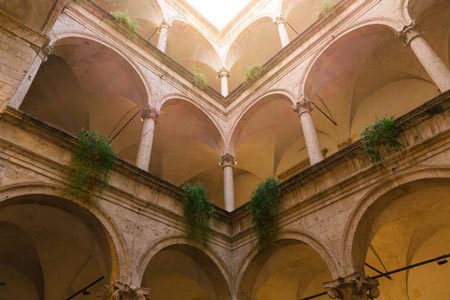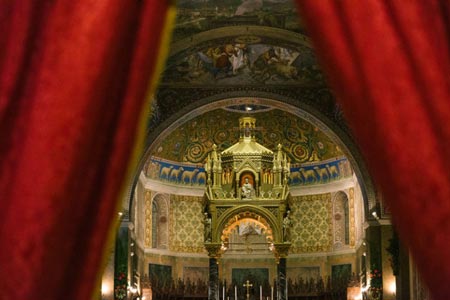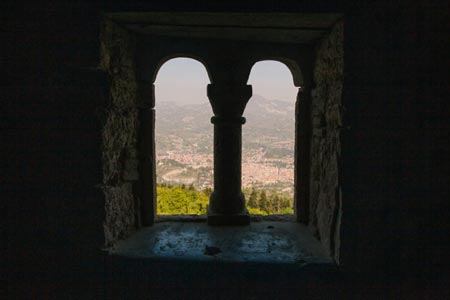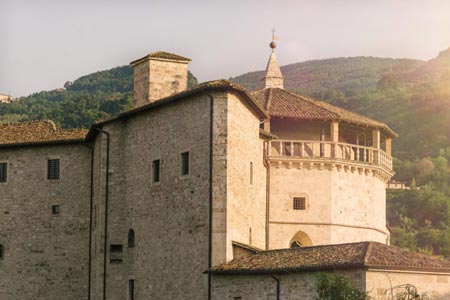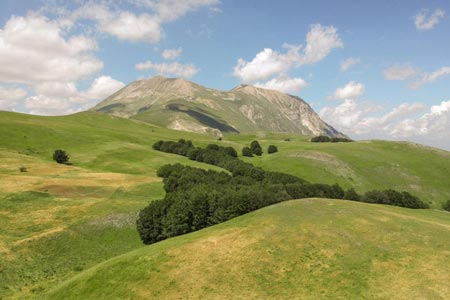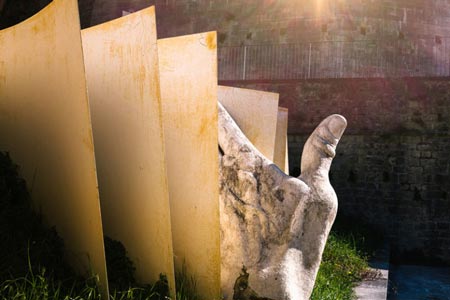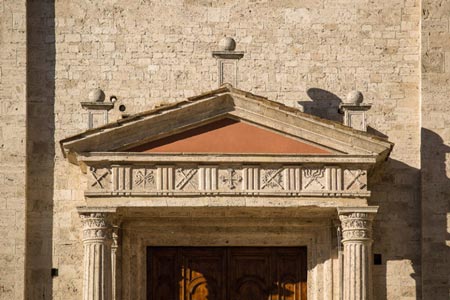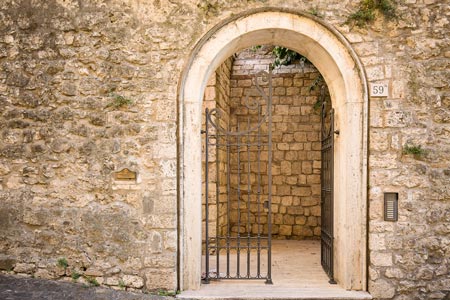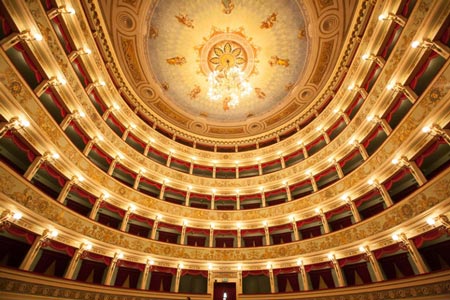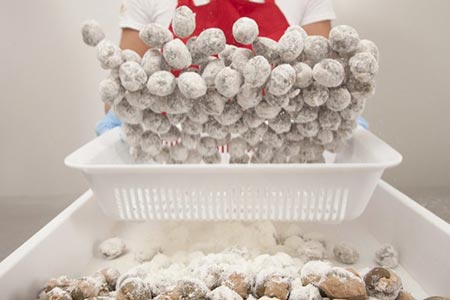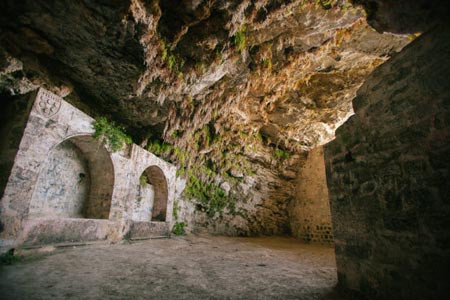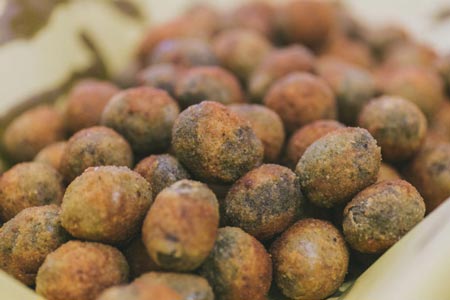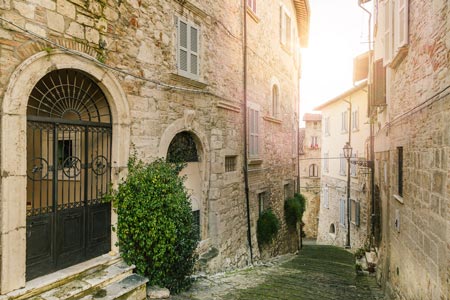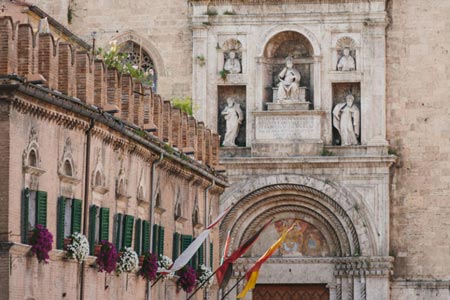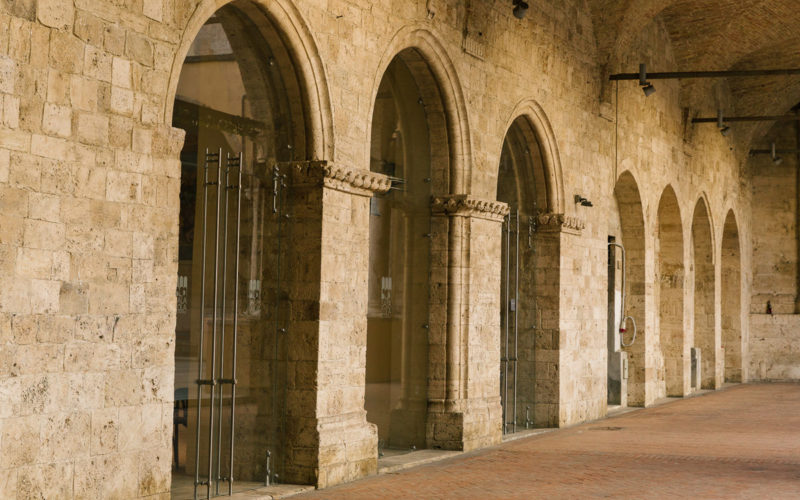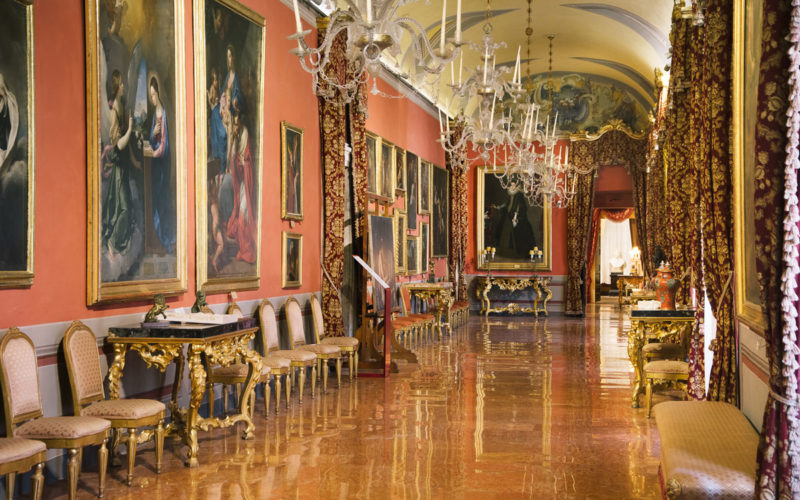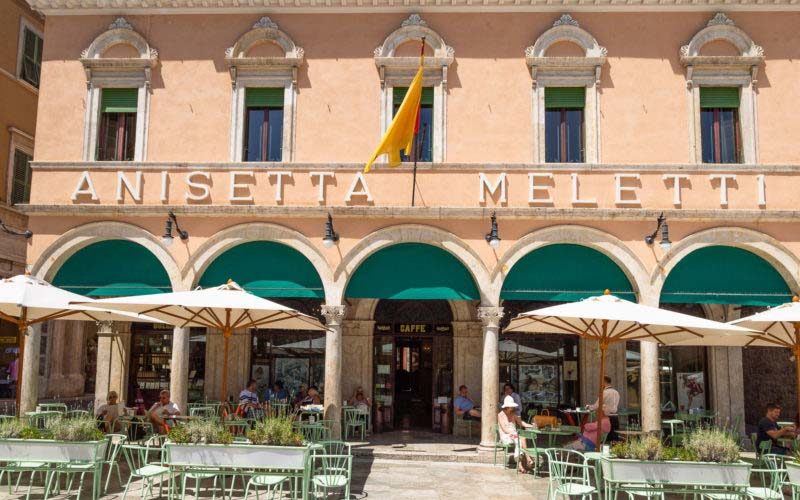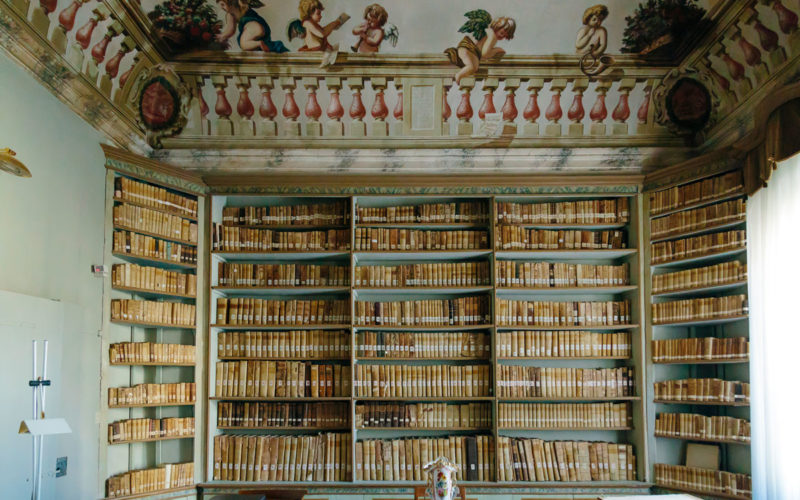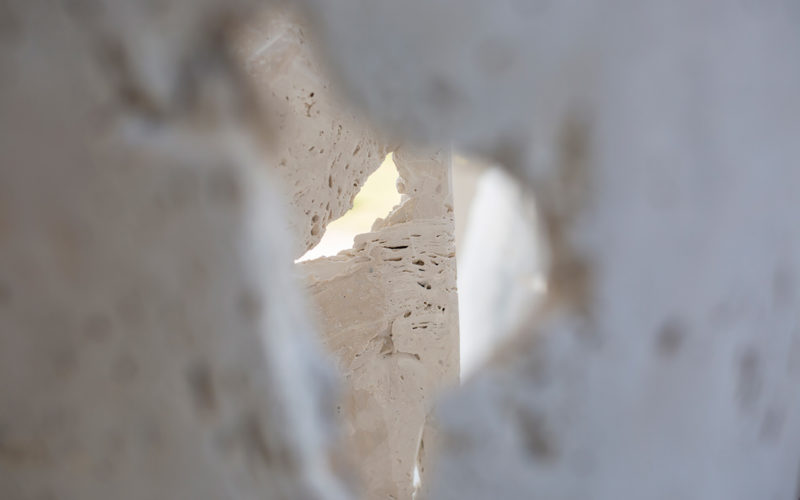If you are visiting Ascoli Piceno, this is a must-see historical trail: the Main Cloister of Saint Francis, Via D’Ancaria, and Via del Trivio are rich in culture.
In Ascoli Piceno, in the 1st century A.C., right in the middle of the Roman age, many centuries before the implementation of the beautiful Church of Saint Francis, the whole monumental complex area of Saint Francis had an entirely different look. There were a lot of rooms there, probably for trade purposes, perhaps ancient tabernae, with rustic floors of cocciopesto (bricks chopped and mixed with mortar), with imposing underground dolia (large clay pots for food storing) and small drainage canals. And years, decades, and centuries pass inexorably. In Via del Trivio, the signs of major destruction are clear. Perhaps, it was a fire in the late Roman age that ended the fervor of daily life in this area. All remains quiet for hundreds of years, and waste, soil, and mud accumulate on the Roman buildings by then reduced into ruins; A thick layer of over fifty centimeters of pitch-black soil seals the ancient ruins and blocks their view to the inhabitants of Ascoli, who completely abandoned this area until the 12th century, to gather and retire to safer places.
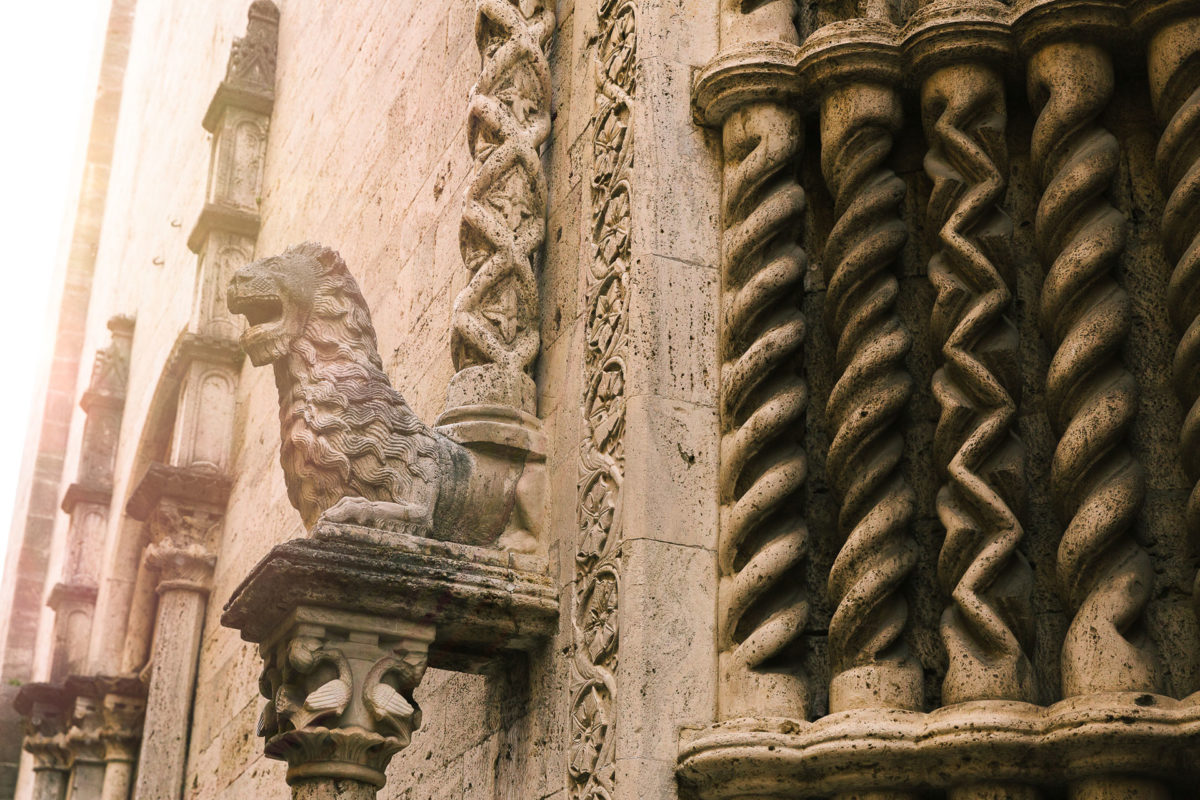
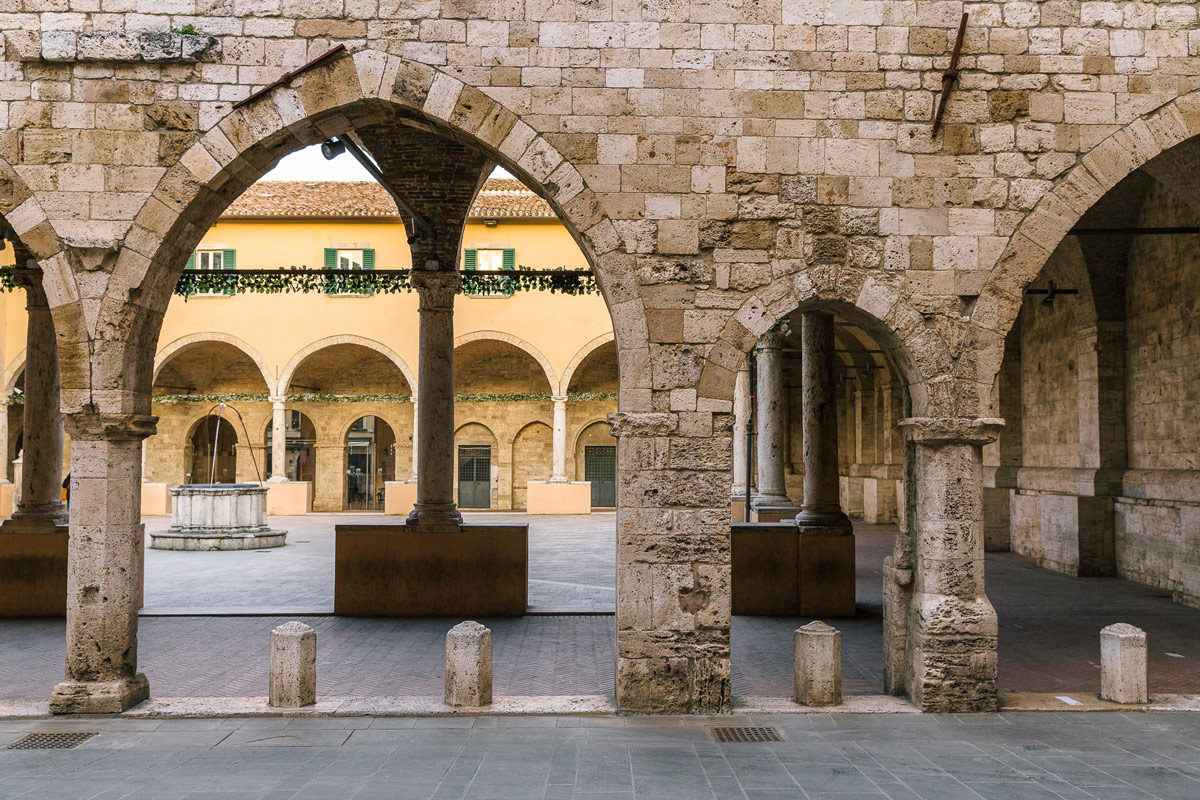
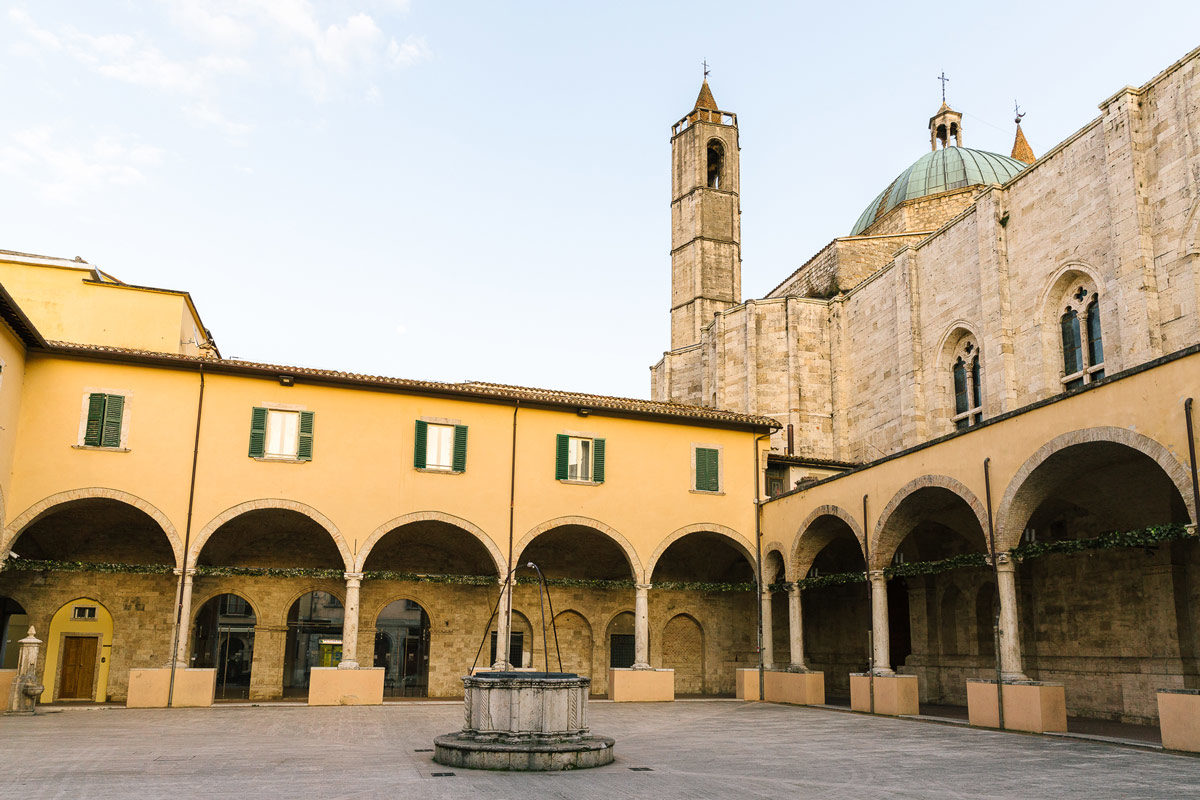
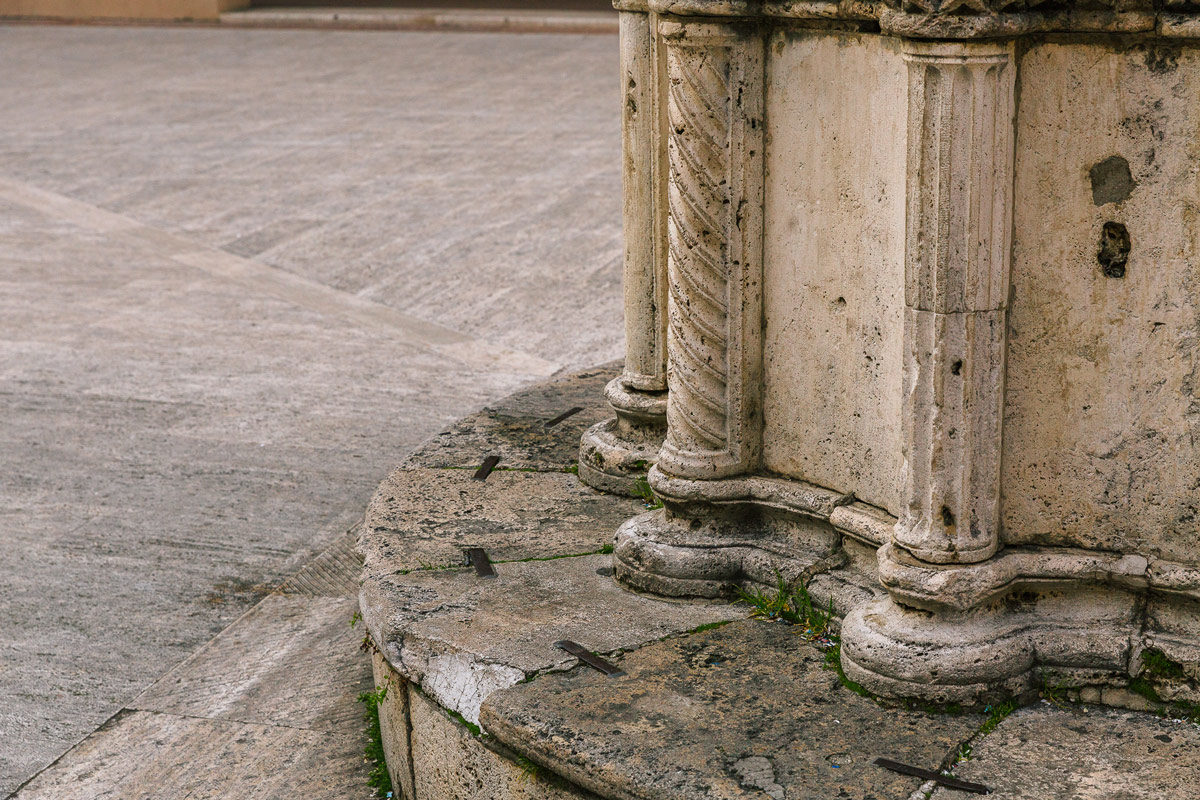
Then the thirteenth century comes, taking with him the rebirth and return to a normal and peaceful life. The project and construction of the Saint Francis complex, with its boundary wall, which makes via D’Ancaria and Via del Trivio much narrower than now, are the proof of a new dynamism and a new urban expansion. A furnace produced sober, solid, and not decorated clay containers in use in the fourteenth century, for the daily friar’s mess hall. Suddenly collapsed and abandoned, we have found this place like it was, with the pots of the last cooking still inside.
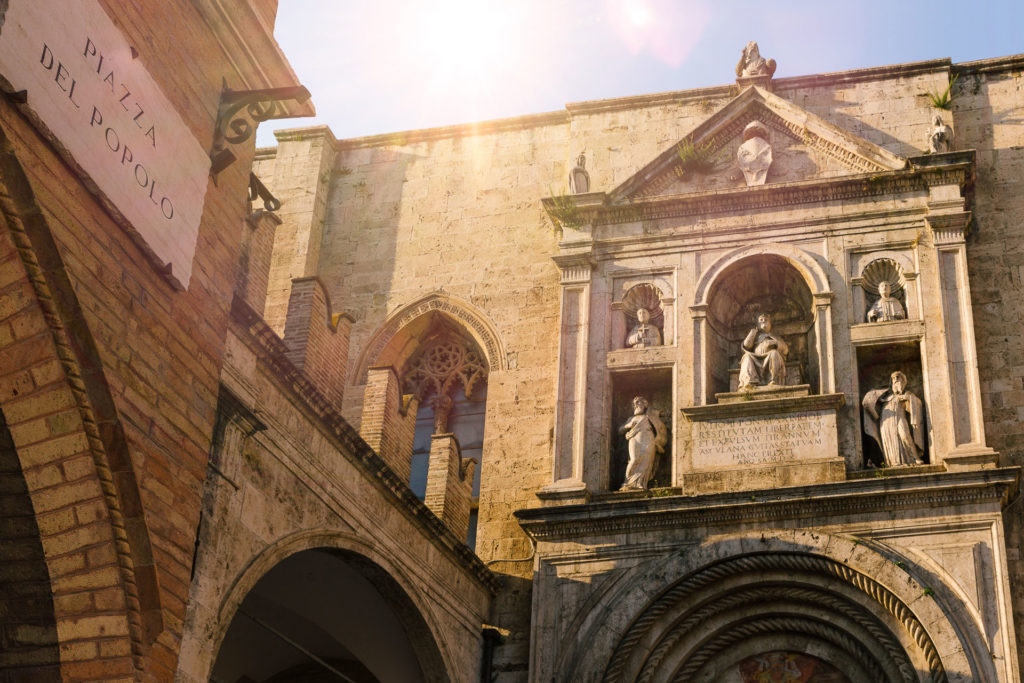
Between the 1300s and 1400s, the great social tension led to violent destructions after the turbulent events of the city, when Ascoli was a republic, and the Duke of Atri tried to reconquer the city on behalf of the pope. This strong sense of insecurity among the population forced someone to hide what he had managed to save with so much effort: a Tesoretto (hidden money savings) of over two hundred copper coins called piccioli, and a large silver coin from the mint of Ancona called Agontano. However, The Tesoretto, kept inside a small canvas bag and carefully placed inside a hole in the ground, was never recovered by the owner, maybe dead during those bloody events. A bronze reproduction of one of the coins from the treasure is now visible on the new pavement of Via D’Ancaria, in the exact place of the recovery, remembering this magnificent discovery and the unfortunate story of who hid it.
